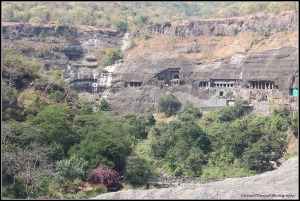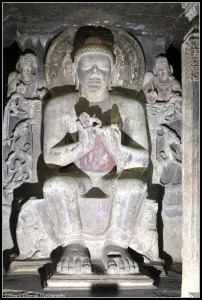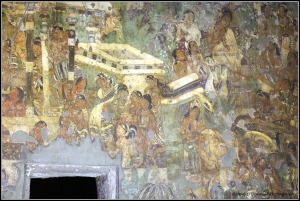Robin and I set off yesterday on a 28-day Indian journey through Maharashtra, Gujarat and Rajasthan. Last night we arrived in the ancient fortified city of Aurangabad at the height of the Diwali festivities, a celebration of light over darkness, victory over defeat and awareness over ignorance.
There has been much public debate recently about the prolific use of fireworks (crackers) in Diwali celebrations especially in the cities that are already struggling with unacceptable levels of pollution. Some reports suggest that in cities like Delhi sales of crackers have fallen by as much as 80%. There seemed to be little evidence of this being the case in Aurangabad as we we witnessed a night sky lit up in a thousand colors as the whole city appeared to contribute to the spectacular celebration.
After breakfast this morning our driver Abhi was waiting to take us on an excursion to the UNESCO World Heritage Site at the Caves of Ajanta. Abhi is a fine example of what a friend once described as “an unnecessarily handsome young man”. As we drove north from Aurangabad our guide explained much about the history and folklore of the region.
The drive took us past fields of cotton, ginger and peppers which along with onions and, most importantly, sugar cane make up the major produce of this part of the state of Maharashtra. Aurangabad itself was once the seat of the Mughal rulers of the region until they moved their power base to Hyderabad due to lack of natural water sources in Aurangabad.
On arrival at the Caves of Ajanta, some 100km north of Aurangabad, it is immediately apparent why the boast World Heritage Site status. The caves date from the second Century BC to the fifth Century AD and were originally excavated from the hard volcanic rock of the foothills of the Western Ghats mountains by Buddhist monks.
There are 30 caves in total that provided sleeping accommodation and prayer rooms for the monks. They provide some of the best preserved wall paintings, carvings and sculptures many dating back over 2,000 years. The decline of Buddhism in India saw the monks abandon the caves and they were lost to civilization for over 1,000 years until they were rediscovered and restored in the mid-19th Century.
Steve O’Donnell is UK Director of Serene Journeys, an independent travel company specializing in meeting the needs of LGBTI travelers to India. He is also a freelance travel writer and photographer. Contact Steve on steve@serenejourneys.co












